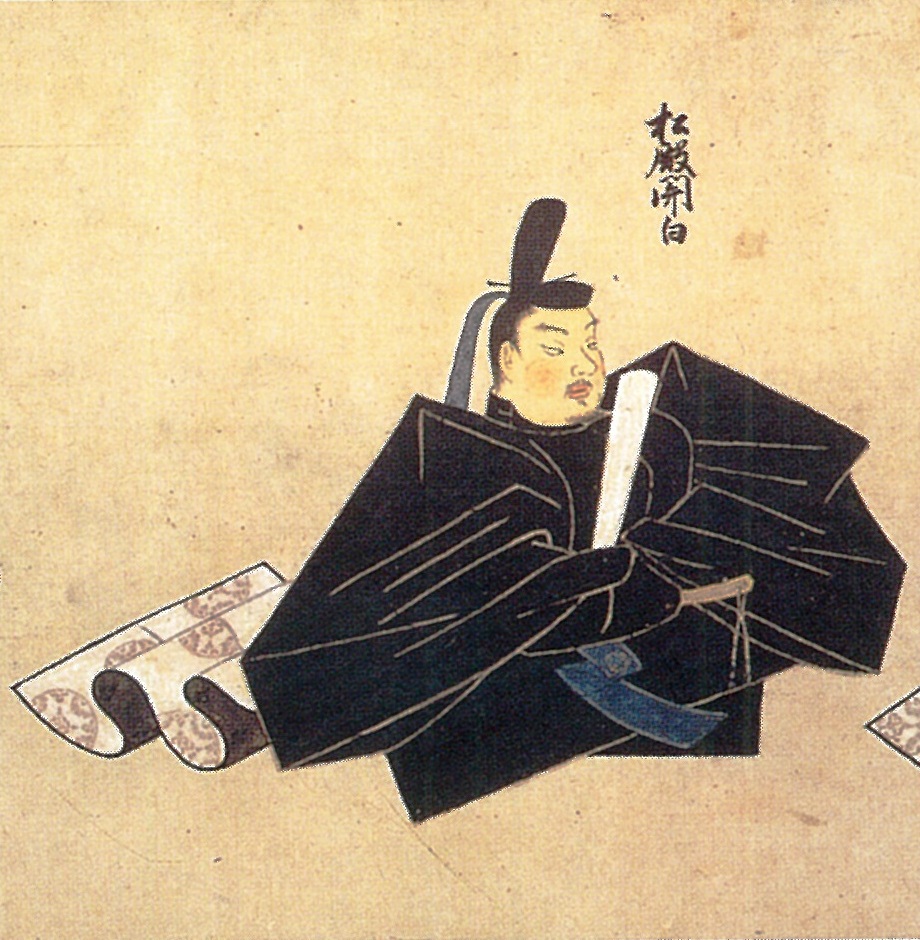Fujiwara No Motofusa on:
[Wikipedia]
[Google]
[Amazon]
 was an imperial regent in the late 12th century, serving both
was an imperial regent in the late 12th century, serving both
 was an imperial regent in the late 12th century, serving both
was an imperial regent in the late 12th century, serving both Emperor Rokujō
was the 79th emperor of Japan, according to the traditional order of succession. His reign spanned the years from 1165 through 1168.
Genealogy
Before his ascension to the Chrysanthemum Throne, his personal name (his ''imina'') was Nobuhito''- ...
and Emperor Takakura
was the 80th emperor of Japan, according to the traditional order of succession. His reign spanned the years from 1168 through 1180.
Genealogy
Before his ascension to the Chrysanthemum Throne, his personal name (his ''imina'') was Norihito''-s ...
. He was also called , as he came from the village of Matsudono, near Kyoto
Kyoto ( or ; Japanese language, Japanese: , ''Kyōto'' ), officially , is the capital city of Kyoto Prefecture in the Kansai region of Japan's largest and most populous island of Honshu. , the city had a population of 1.46 million, making it t ...
. Fujiwara no Tadataka and Matsudono Moroie
, third son of Matsudono Motofusa, was a ''kugyō'' (high-ranking Japanese official) from the late Heian period to the early Kamakura period. Regent Fujiwara no Tadataka and Buddhist monks Gyōi and are his stepbrothers. His mother was Tadako ...
were his first and third sons, respectively.
Though wielding great power as ''sesshō'' and ''kampaku'', Motofusa was prevented from becoming the head of the Fujiwara family
The was a powerful family of imperial regents in Japan, descending from the Nakatomi clan and, as legend held, through them their ancestral god Ame-no-Koyane. The Fujiwara prospered since ancient times and dominated the imperial court until th ...
by the political maneuvers of Taira no Kiyomori
was a military leader and '' kugyō'' of the late Heian period of Japan. He established the first samurai-dominated administrative government in the history of Japan.
Early life
Kiyomori was born in Japan, in 1118 as the first son of Taira ...
. An incident in 1170, while Motofusa was on his way to the Hōjuji Palace, further cemented his rivalry with the Taira
The was one of the four most important clans that dominated Japanese politics during the Heian period of Japanese history – the others being the Minamoto, the Fujiwara, and the Tachibana. The clan is divided into four major groups, named ...
clan. The Regent, along with a large retinue, was making his way to the palace for a ceremony which the cloistered
A cloister (from Latin , "enclosure") is a covered walk, open gallery, or open arcade running along the walls of buildings and forming a quadrangle or garth. The attachment of a cloister to a cathedral or church, commonly against a warm souther ...
Emperor Go-Shirakawa
was the 77th emperor of Japan, according to the traditional order of succession. His de jure reign spanned the years from 1155 through 1158, though arguably he effectively maintained imperial power for almost thirty-seven years through the ''in ...
was supposed to attend, when a young boy, Taira no Sukemori, refused to make way for him and his retinue. As a result, the Regent's men smashed Sukemori's carriage and humiliated him. Sukemori was a grandson of Kiyomori and so, after a few failed attempts at reprisal, followers of Taira no Shigemori
was the eldest regent of the Taira clan patriarch, Taira no Kiyomori. He supported his father in the Heiji Rebellion. He died two years before his father. His son, Taira no Koremori, became a monk in 1184 during Genpei War period, and drowned ...
(Sukemori's father) attacked the Regent's men on their way to a solemn ceremony, dragging them from their horses and humiliating them. These events, while seemingly minor on the surface, led to a rift between Emperor Go-Shirakawa and the Taira, and therefore to closer relations between Go-Shirakawa and the Minamoto
was a noble surname bestowed by the Emperors of Japan upon members of the imperial family who were excluded from the line of succession and demoted into the ranks of the nobility since 814."...the Minamoto (1192-1333)". ''Warrior Rule in Jap ...
, enemies of the Taira.
He is the maternal grandfather of the founder of Sōtō Zen
Sōtō Zen or is the largest of the three traditional sects of Zen in Japanese Buddhism (the others being Rinzai school, Rinzai and Ōbaku). It is the Japanese line of the Chinese Caodong school, Cáodòng school, which was founded during the ...
Buddhism in Japan, Eihei Dōgen, son of his daughter Ishi.
In 1179, he was ordained as a Buddhist monk and took the Dharma name
A Dharma name is a new name acquired during both lay and monastic Buddhist initiation rituals in Mahayana Buddhism and Pabbajjā, monastic ordination in Theravada Buddhism (where it is more proper to call it Dhamma or Sangha name). The name is ...
Zenkan (善観). When he died in 1230, he was given the posthumous Buddhist names Nakayamain (中山院) and Bodaiin (菩提院).
Service as regent
*1166–1168: Sessho underEmperor Rokujō
was the 79th emperor of Japan, according to the traditional order of succession. His reign spanned the years from 1165 through 1168.
Genealogy
Before his ascension to the Chrysanthemum Throne, his personal name (his ''imina'') was Nobuhito''- ...
.
*1168–1172: Sessho under Emperor Takakura
was the 80th emperor of Japan, according to the traditional order of succession. His reign spanned the years from 1168 through 1180.
Genealogy
Before his ascension to the Chrysanthemum Throne, his personal name (his ''imina'') was Norihito''-s ...
.
*1172–1179: Kampaku under Emperor Takakura.
References
{{DEFAULTSORT:Matsudono, Motofusa 1144 births 1230 deaths Fujiwara clan Matsudono family People of the Heian period People of the Kamakura period Sesshō and Kampaku Buddhist clergy of the Heian period Buddhist clergy of the Kamakura period 12th-century regents